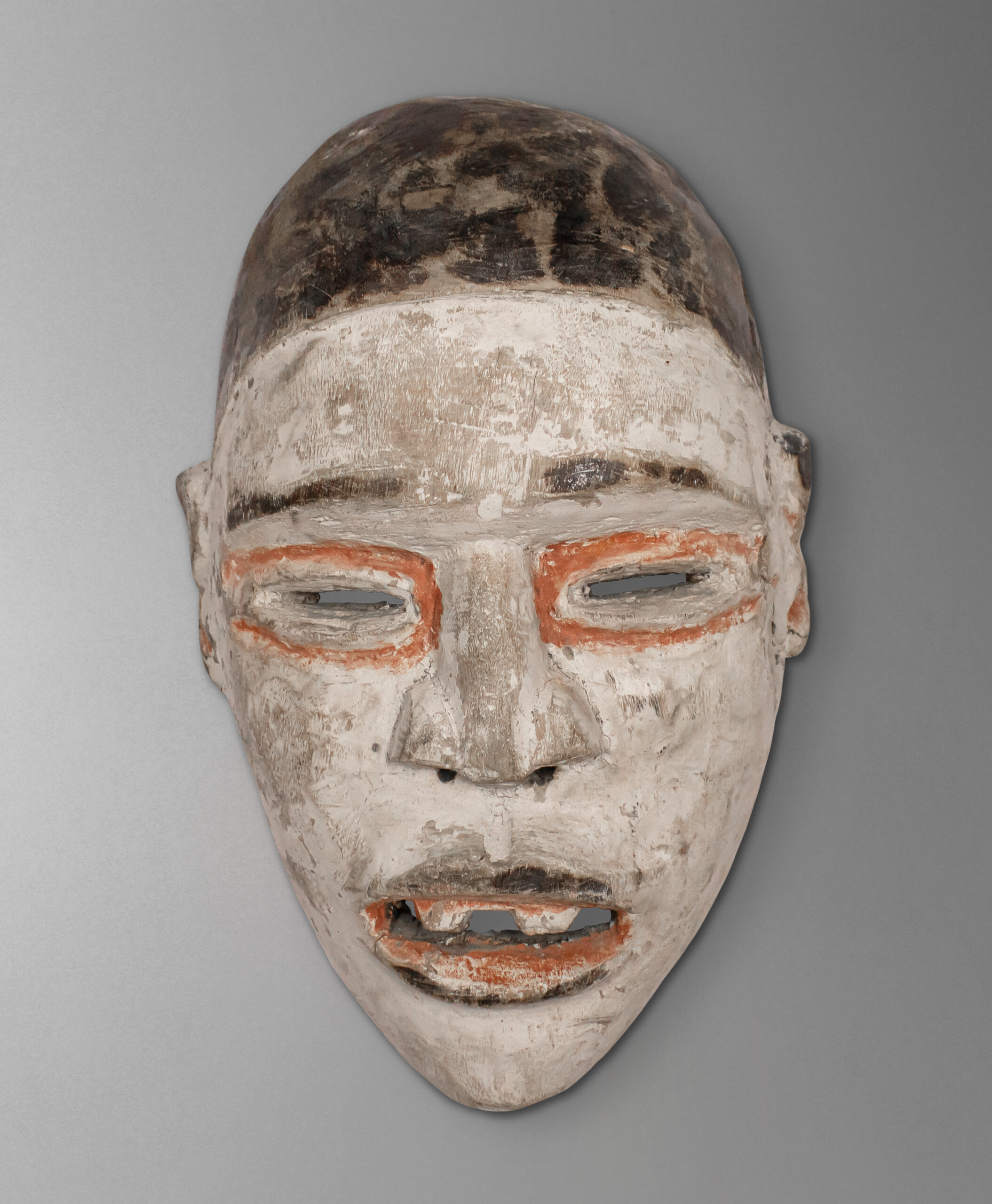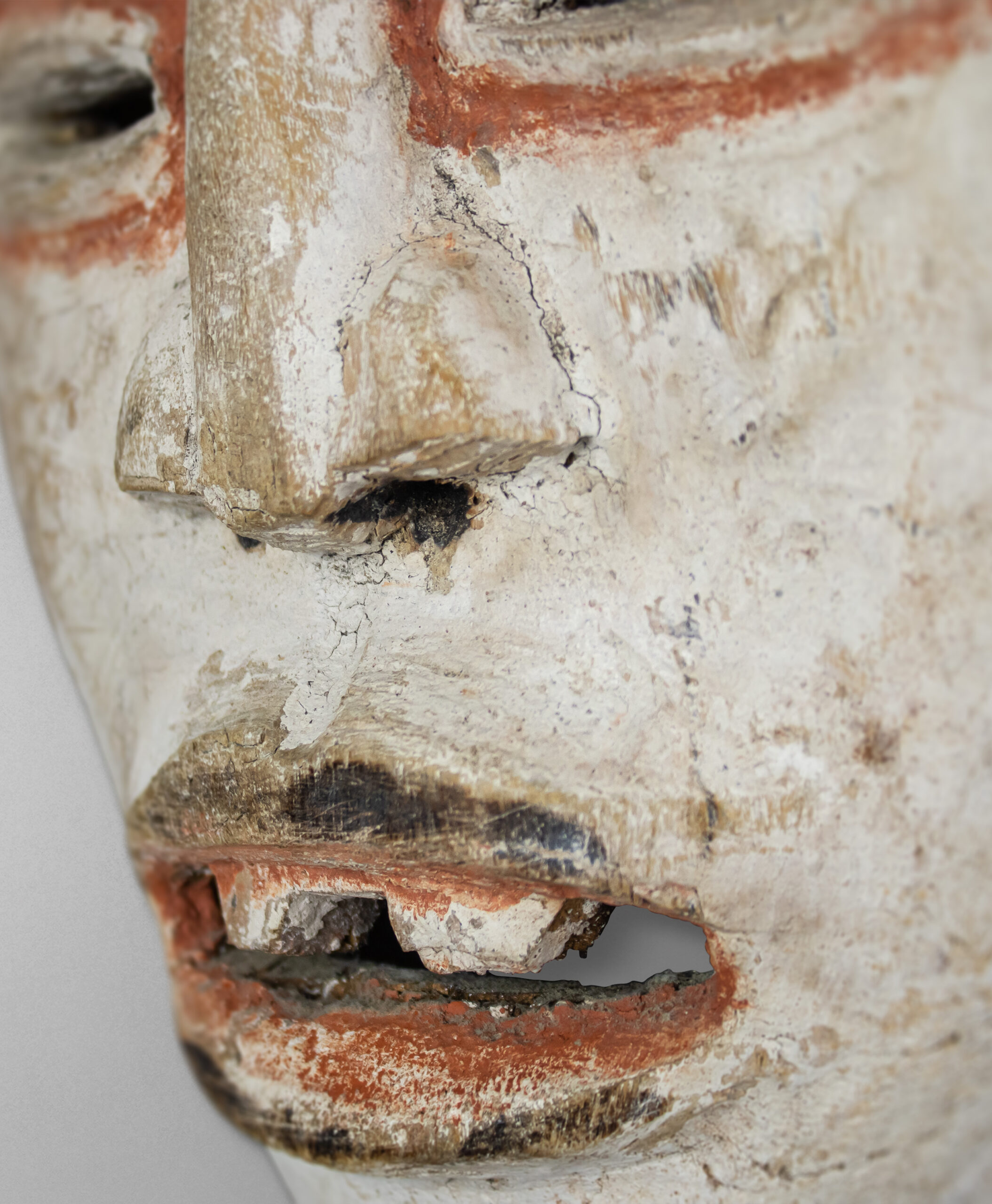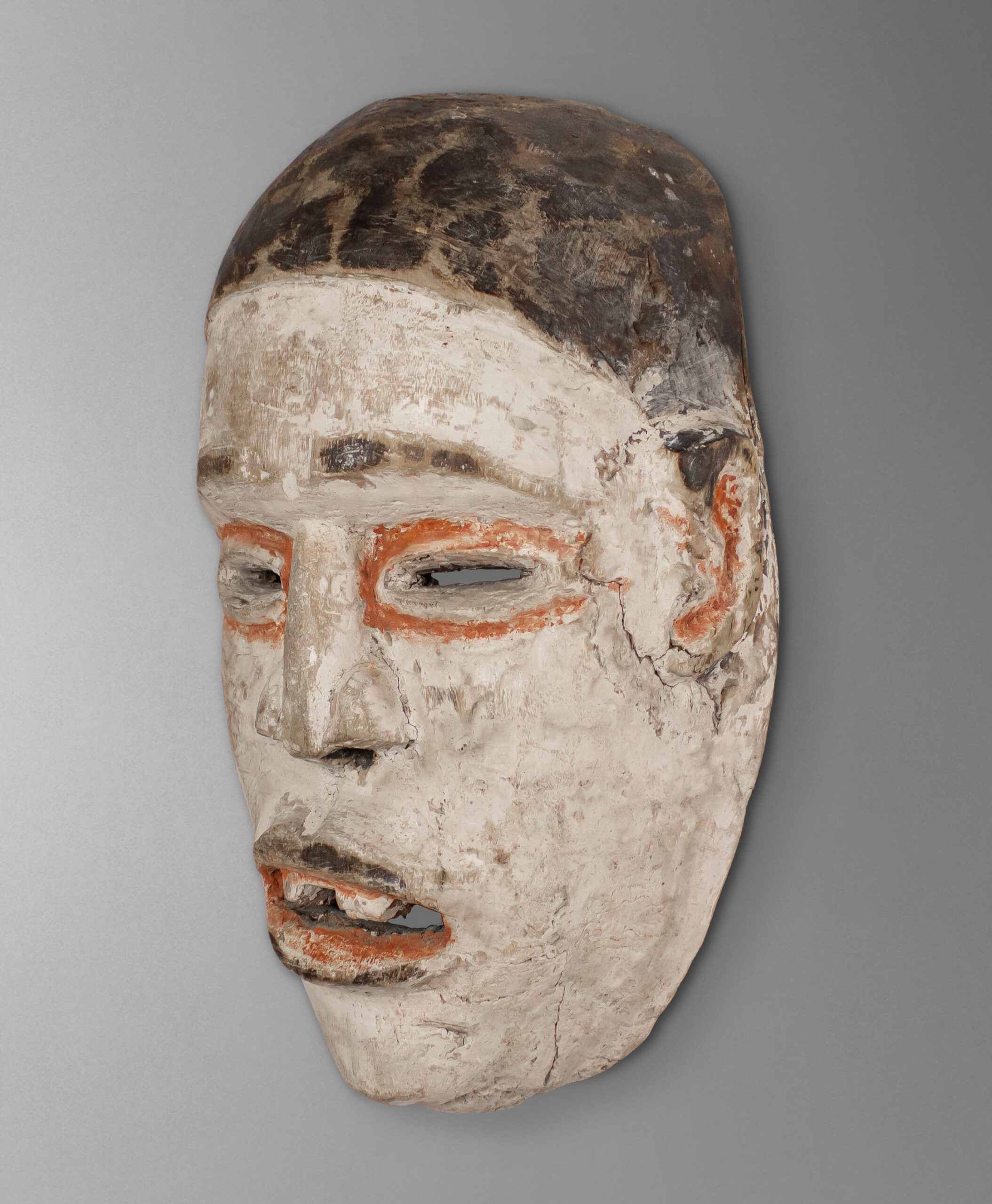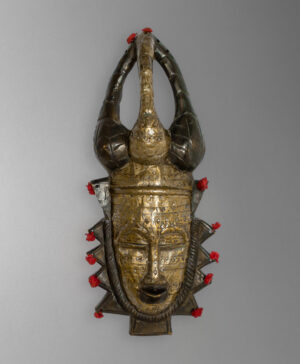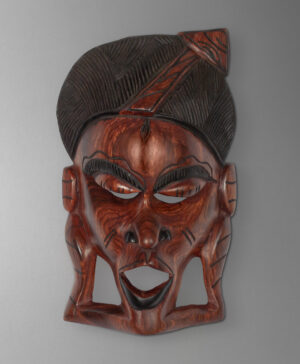ENGLISH
Tribal mask of the Bakongo ethnic group from Congo, crafted from hand-carved wood and fully painted with kaolin.
It is distinguished by its wide forehead, finely outlined eyebrows, semi-closed eyes in a linear shape surrounded by red paint, wide nose, and open thick mouth, displaying some carved teeth.
The Bakongo ethnic group uses white-faced masks associated with the world of spirits.
These masks were used during initiations and funerals of important figures or could have social control functions, or be used by diviners and healers to exert power.
Among the Bakongo people, red represented bravery, black represented darkness, and white illustrated knowledge or femininity, fertility, and social harmony.
PORTUGUÊS
Máscara tribal da etnia Bakongo do Congo, esculpida em madeira e totalmente pintada com caulim.
É distinguida por sua ampla testa, sobrancelhas finamente delineadas, olhos semifechados em forma linear cercados por tinta vermelha, nariz largo e boca aberta e espessa, mostrando alguns dentes esculpidos.
A etnia Bakongo utiliza máscaras de rosto branco associadas ao mundo dos espíritos.
Essas máscaras eram usadas durante iniciações e funerais de figuras importantes, ou podiam ter funções de controle social, ou serem utilizadas por adivinhos e curandeiros para exercer poder.
Entre o povo Bakongo, o vermelho representava a coragem, o preto representava a escuridão, e o branco ilustrava o conhecimento ou a feminilidade, a fertilidade e a harmonia social.
ESPAÑOL
Máscara tribal de la etnia Bakongo del Congo, elaborada en madera tallada a mano y totalmente pintada con caolín.
Se distingue por su amplia frente, cejas finamente delineadas, ojos semicerrados en una forma lineal rodeados de pintura roja, nariz ancha y boca gruesa abierta, mostrando algunos dientes tallados.
La etnia Bakongo utiliza máscaras de cara blanca que están asociadas con el mundo de los espíritus.
Estas máscaras se usaban durante iniciaciones y funerales de figuras importantes, o podían tener funciones de control social, o ser utilizadas por adivinos y curanderos para ejercer poder.
Entre el pueblo Bakongo, el color rojo representaba la valentía, el negro representaba la oscuridad, y el blanco ilustraba el conocimiento o la feminidad, la fertilidad y la armonía social.


